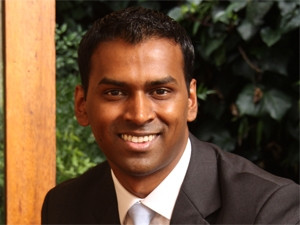
Most South African consumers experience challenges using new types of smart high-tech devices.
That's according to new a report from Accenture, titled Engaging the Digital Consumer in the New Connected World, which reveals in SA, 72% report various problems when they use new device types such as wearable fitness monitors, smart watches, smart home thermostats, in-vehicle entertainment systems, home connected surveillance cameras and security systems, and wearable health products.
The biggest challenges consumers face are: the smart devices are "too complicated to use" (25%), "did not work as advertised" (20%), and "set-up did not proceed properly" (18%), says Accenture.
Lee Naik, MD for technology and digital strategy at Accenture in SA, says for these new connected device categories, high-tech companies need to go back to the drawing board and rethink their product development approaches to focus on the entire customer experience.
"They should make fundamental strategic changes that no longer focus on product feature differentiation, but rather on holistic, digital experience differentiation."
Early stages
He notes while smart devices can definitely be considered mainstream in SA, the delivery of smart services is still in the early stages. Thus, he explains, while a large portion of the middle- and upper-class South African consumers own several smart devices, the capabilities of these devices are largely underutilised.
"This, however, is changing rapidly. A number of broadcasters, telcos and ISPs have announced the introduction of on-demand streaming services," Naik says. "We are also seeing the foundations being laid for smart-home and smart-car products and services. Given these developments, South Africans can expect to start enjoying a larger potential of their smart device investments in the short to medium term."
He is of the view that the challenges consumers face in the purchase and setup of devices are common across all countries; however, it's clear the support available to consumers is differentiated in other markets.
But this is a declining factor, as product developers have made dramatic improvements in user experience and reduced setup complexity, he says. "A good example of this is the Apple iOS platform. Users are inclined to use applications and services that are easy to access, work first time, and tend to be stable and fault-tolerant."
South African service providers should, therefore, focus on the full product life cycle if they hope to capture the local market, he notes.
According to Naik, smartphones are by far the most popular smart devices among South African consumers, with even the lower LSM (living standards measure) consumers making use of cheap mobile devices to utilise smart services such as WhatsApp.
"Smart TVs are fairly prevalent as well, and we are also seeing a fairly substantial take-up of set-top boxes such as Apple TV, Altech's node and even extended use of gaming platforms such as Microsoft's Xbox and Sony's PlayStation," he adds.
Trusted brands
The report discovered, across all age groups, 35% mentioned buying "a trusted brand" as the most important criteria when deciding. Also, 33% cited "ease of use" and "product features and functionalities" as buying decision factors.
While respondents revealed relatively modest purchase intentions over the next 12 months across the newer high-tech device categories, their purchase plans are much more robust over a five-year period, says Accenture.
Over the next 12 months, for example, 14% of consumers plan to buy a connected surveillance camera and security system. However, the consultancy firm says within five years, 54% plan to do so.
Within one year, it adds, 14% intend to buy a wearable fitness monitor, whereas 50% plan to do so within five years. The other categories with strong purchase interest over the next five years include connected car entertainment systems at 48%, wearable health devices and smartwatches at 47% each, home 3D printers and wearable heads-up display glasses at 40% each.
Share